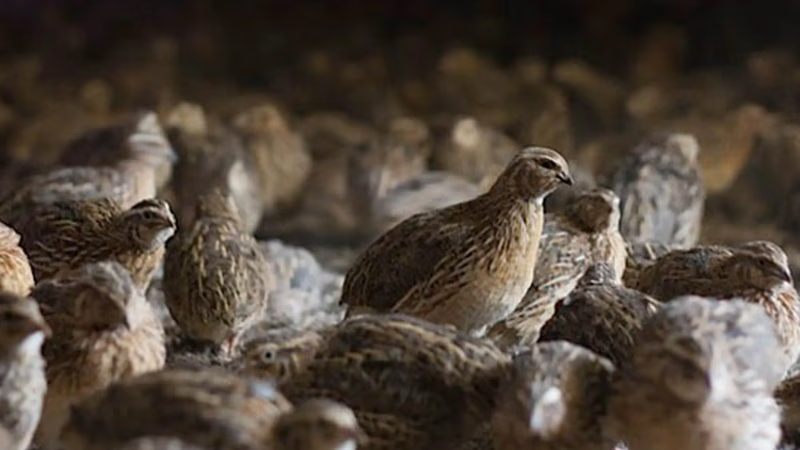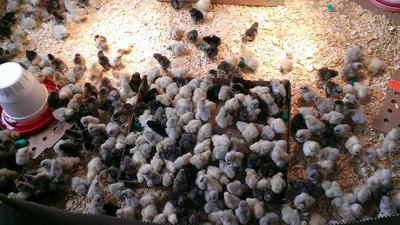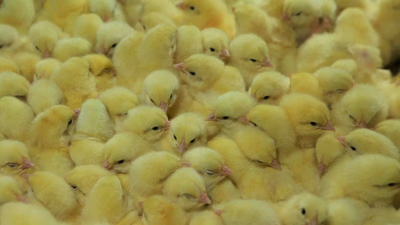
Chickens play a crucial role in Middle Eastern trade.
Meat birds such as chicken, turkey, goose, duck, ostrich, quail, partridge, pheasant and pigeon have various roles in the culture, religion and poultry market of West Asia and the Middle East . These birds play an important role in many cultures and religions of the Middle East and West Asia. For example, chicken is known as a basic food source in most communities of these regions and is also used in various religious ceremonies. In some religions, birds such as turkeys and geese also need to provide food in sacrifice ceremonies .
The importance of meat birds for the economy of the people of the Middle East cannot be definitively the same for all countries and regions, because this requires a comprehensive analysis and comparison between different factors. However, some meat birds are usually more important to the economy of Middle Eastern people. The importance of other meat birds such as geese, ducks, quails, partridges, pheasants and pigeons also depends on the local conditions and sales market in each country and region of the Middle East.
- As a meat bird, chicken is very important in the economy of the Middle East. The production of chicken meat and eggs in this region has been expanded industrially, and providing food to people and creating employment for young people is done through chicken breeding. Also, side products such as chicken manure and mother hen breeding also play an important role in the economy of this region.
- Turkey is also considered as a meat bird in the economy of the Middle East. High-priced turkey meat is used in some high-end restaurants and kitchens. Turkey production is also done in some countries as a side and additional industry along with chicken production.
- As a special meat bird, the ostrich meets certain requirements. Ostrich meat and oil are used in some regions of the Middle East. Also, the production of ostrich skin and its use in various industries such as leather and fashion industries is booming.
Poultry plays an important role in the bird market of the Middle East and West Asia. These birds are used as basic food sources and in the poultry industry, meat, eggs and other related products are produced. In addition to providing food, meat birds are also used as sources of income and employment in this market. Meat birds play an important role in some important events and ceremonies such as celebrations, weddings, Eid and religious and cultural festivals. In these ceremonies, birds exist as symbols of properties such as happiness, wealth and abundance and are used as a valuable symbol in the culture and religion of the region.
Meat birds play an important role in the poultry industry in the Middle East and West Asia. Presidents and heads of states play an important role in determining policies and decisions related to poultry and chickens in West Asia and the Middle East. They may determine the rules and regulations related to poultry breeding and market, develop policies for the development of the poultry industry, and play a role in determining the amount and manner of government support to this industry. Also, they may play a role in communicating with other countries and international organizations regarding poultry and chicken cooperation and their trade.
-

The poultry breeding and sales industry in the Middle East and West Asia is experiencing significant growth due to high demand for white meat. This sector encompasses various methods of breeding, including industrial and agricultural practices. Industrial breeding, prevalent in developed countries like Saudi Arabia and the UAE, focuses on large-scale production, ensuring high-quality meat products through optimal resource management. Conversely, agricultural breeding occurs on a smaller scale in rural areas, where local farmers raise chickens and turkeys. The marketing of poultry products includes fresh meat, fillets, and processed items like nuggets, which are sold both locally and for export. Nomadic communities play a crucial role in this market by utilizing traditional methods to raise birds and contribute to local supply chains. Their practices enhance genetic diversity among poultry breeds, improving resilience against diseases and adapting to local climates. This dynamic interplay between modern industrial techniques and traditional agricultural methods shapes the region"s poultry landscape. "
-

Poultry, particularly chickens, plays a vital role in the economies and cultures of the Middle East and West Asia. Chickens serve as a primary food source and are integral to various religious ceremonies. The economic impact of poultry varies across regions, influenced by local market conditions. Chicken production has industrialized significantly, providing food security and employment opportunities, especially for youth. Other meat birds like turkeys, geese, and ostriches also contribute to the economy; turkey is often featured in high-end dining while ostrich products are gaining traction in fashion and leather industries. Poultry is not only essential for sustenance but also serves as a source of income through meat, eggs, and by-products like manure. Additionally, meat birds symbolize prosperity during cultural events such as weddings and religious festivals. The governance surrounding poultry production is crucial; leaders influence policies that affect breeding practices, market regulations, and international trade relations. Overall, the poultry industry is a cornerstone of economic stability and cultural identity in these regions.
-

White meat, particularly chicken and turkey, plays a significant role in the diets of Asian Arabs and Muslims, adhering to halal dietary guidelines. Halal practices dictate specific slaughtering methods that ensure the meat is permissible for consumption. While traditional celebrations often involve larger animals, urban households increasingly opt for white meat due to its practicality and affordability. The poultry industry has expanded in the Middle East, making chicken a staple protein source. Cultural preferences influence the consumption of white meat, with various dishes like kebabs and biryani being popular. However, dietary habits can vary across regions and cultures, with some birds considered haram under Islamic law. The nutritional benefits of white meat include being leaner than red meat and providing essential vitamins and minerals. Overall, white meat is a versatile ingredient that aligns with health-conscious choices among many in the region.
-

The poultry market in West Asia and the Middle East is influenced by cultural, economic, and regulatory factors. Chicken remains a dominant product, with fresh, frozen, and processed varieties widely consumed. Quail and turkey also have significant markets, offering high-protein options. Ducks and geese are popular in upscale dining, while ostrich has a niche presence. Key players in the poultry trade include Saudi Arabia, the UAE, Oman, Turkey, and Iran. These countries are major importers and exporters due to their population needs and geographical advantages. The dynamics of this market can shift based on trade policies, economic conditions, and consumer preferences.




